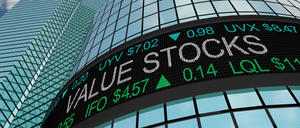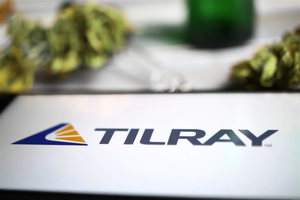The "Vietnam Cement Industry Market Size & Forecast by Value and Volume Across 80+ Market Segments by Cement Products, Distribution Channel, Market Share, Import - Export, End Markets - Databook Q2 2025 Update" report has been added to ResearchAndMarkets.com's offering.
The cement market in Vietnam is expected to grow by 6.6% annually to reach US$4.12 billion in 2025. The cement market in the country recorded strong growth during 2020-2024, achieving a CAGR of 8.3%. Growth momentum is expected to remain positive, with the market projected to expand at a CAGR of 6.3% during 2025-2029. By the end of 2029, the cement market is projected to expand from its 2024 value of US$3.86 billion to approximately US$5.25 billion.
This report provides a data-rich, forward-looking analysis of cement industry, covering market size, pricing trends, production, consumption, and segment-level performance from 2020 to 2029. It examines cement demand across key residential, non-residential, and infrastructure sectors alongside granular segmentation by cement type, distribution channel, end-user profile, and city tier.
Vietnam's cement industry is navigating a turbulent period characterized by sluggish domestic demand, export market dependence, and growing energy and environmental pressures. While the country remains one of the world's leading cement exporters, softening construction activity and regional overcapacity are constraining price realization and profitability. Amid these challenges, leading players are accelerating sustainability investments, diversifying export routes, and deploying energy efficiency technologies.
Government policy is increasingly geared toward emissions reduction and industrial modernization. The medium-term industry outlook hinges on balancing environmental mandates with export competitiveness and domestic market revival. Vietnam's cement industry, once driven by domestic construction booms, is now realigning around export resilience, regulatory compliance, and sustainable innovation. The sector's next phase of growth will come from its ability to diversify markets, adopt circular practices, and meet environmental standards both domestically and in export destinations.
Firms that invest in green cement technology, waste-to-energy solutions, and integrated digital operations will gain long-term competitive advantage. Equally important will be navigating Vietnam's evolving regulatory framework and capitalizing on government stimulus aimed at construction sector revitalization. With strategic investment and policy coordination, Vietnam's cement sector can remain a vital contributor to the regional construction materials trade and national industrial sustainability goals.
Sluggish Domestic Demand and Export Reliance Define Market Dynamics
- Domestic Construction Slowdown Has Impacted Cement Consumption: The real estate sector has slowed sharply due to tightened credit, bond market volatility, and delayed housing projects especially in Ho Chi Minh City and Hanoi. Cement demand from private housing and commercial developers has declined, leading to excess inventory and reduced utilization.
- Public Infrastructure Spending Offers Limited Offset: While the government has initiated highway and metro projects under its 2021-2025 economic plan, execution delays and fragmented contractor activity have limited bulk cement uplift. Key infrastructure builds like the North-South Expressway are generating regional demand but are insufficient to offset the broader demand gap.
- Exports Remain a Lifeline but Are Facing Pricing and Volume Pressure: Major producers like VICEM and Vissai rely heavily on clinker and cement exports to the Philippines, China, and Bangladesh. In 2024, export volumes were affected by falling demand in China and increased freight rates to South Asia, pressuring margins despite volume stability.
Vertical Integration and Green Partnerships Are Emerging as Competitive Levers
- Integrated Operations Are Supporting Cost Management: Players like Tan Thang Cement and Ha Tien 1 have leveraged integrated production models with captive limestone quarries and on-site energy generation. This allows better control over cost per ton, especially amid volatile coal and fuel prices.
- Green Cement and Low-Carbon Products Are Gaining Policy Attention: The Ministry of Construction is supporting the shift to low-clinker cement and greater use of blended materials like fly ash, slag, and calcined clay. Some companies have begun offering green-labelled cement products aimed at LEED and EDGE-certified construction projects.
- International Development Partnerships Are Catalyzing Innovation: In 2023, several Vietnamese cement firms partnered with international development organizations and carbon advisory firms to pilot emissions tracking and SCM optimization. These projects aim to align Vietnamese cement exports with global low-carbon procurement standards.
Production Is Impacted by Fuel Costs, Environmental Mandates, and Capacity Pressures
- Rising Coal and Power Costs Are Reducing Profitability: The industry remains heavily reliant on imported coal, which saw price volatility in 2023-2024, raising kiln operation costs. Power tariffs have also risen, particularly for plants in the northern provinces, prompting firms to explore WHR systems and solar rooftop installations.
- Environmental Regulations Are Increasing Capital Needs: New government emissions standards require investments in dust and NOx control technologies, particularly for older kilns. Some producers are facing delayed expansion plans due to slow permitting tied to environmental impact assessments.
- Overcapacity and Plant Fragmentation Are Pressuring the Market: Vietnam's installed cement capacity exceeds 110 million tons annually, far outpacing domestic demand of under 70 million tons. This has led to price undercutting, especially among smaller and unbranded regional producers struggling with export access.
Moderate Outlook Tied to Export Realignment and Domestic Policy Recovery
- Government Stimulus and Credit Normalization May Revive Domestic Demand: The government is pursuing real estate bond market reform and construction stimulus packages expected to unlock stalled housing developments in 2025. Urban development initiatives in Can Tho, Da Nang, and satellite provinces are anticipated to generate incremental cement demand.
- Export Diversification Into Africa and South Asia Is Underway: Firms are actively exploring new export markets like Kenya, Mozambique, and Sri Lanka to reduce reliance on China and the Philippines. However, freight cost fluctuations and competition from Middle Eastern and South Korean producers remain a constraint.
- Sustainability and Technology Adoption Will Drive Market Positioning: Producers investing in low-emissions cement, energy recovery, and automated logistics are better positioned for government-backed infrastructure projects. Adoption of digital quality control, emissions monitoring, and AI-based fuel optimization is growing among leading manufacturers.
Risks Are Elevated Across Regulatory, Economic, and Trade Dimensions
- Policy Uncertainty and Permit Delays Are Slowing Investment: Shifts in environmental policy, including stricter quarry regulations and mandatory emissions audits, are delaying new capacity approvals. Smaller firms face operational risk from abrupt regulatory enforcement without access to transition funding.
- Credit and Liquidity Constraints in the Construction Sector Remain Unresolved: Many private developers are facing liquidity issues due to unresolved bad loans and restricted bond issuance since 2022. Cement firms with high exposure to retail bagged cement are seeing slower receivables recovery and rising working capital needs.
- Export Exposure Increases Sensitivity to Global Price Shocks: Global economic uncertainty, shipping congestion, and exchange rate fluctuations continue to impact Vietnam's clinker export viability. Sudden import restrictions or dumping investigations in key markets like the Philippines or Bangladesh could further disrupt trade.
Scope
Vietnam Cement Industry Overview
- Cement Production KPIs: Volume and Value
- Cement Consumption KPIs: Volume and Value
- Average Cement Price Trends: Tracked at overall and cement-type level
Vietnam Cement Market by Type of Cement
- Portland Cement
- Blended Cement
- Specialty Cement
- Green Cement
Blended Cement Market by Subtypes of Cement
- Type IS(X) - Portland-Slag Cement
- Type IP(X) - Portland-Pozzolan Cement
- IL(X) - Portland-Limestone Cement
- Type IT - Ternary Blended Cement
Specialty Cement Market by Subtypes of Cement
- Rapid Hardening Cement
- High Alumina Cement
- White Cement
- Sulfate-Resistant Cement
- Other Niche Specialty Cements
Vietnam Cement Market by Key Sector
Residential Construction
- Multi-Family Housing
- Single-Family Housing
Non-Residential Construction
Commercial Buildings:
- Office Buildings
- Retail Spaces
- Hospitality Facilities
- Restaurants
- Sports Complexes
- Other Commercial Properties
Industrial Buildings:
- Manufacturing Units
- Chemical & Pharmaceutical Facilities
- Metal and Material Processing Plants
Institutional Buildings:
- Healthcare Facilities
- Educational Institutions
- Other Institutional Structures
Infrastructure & Other Construction
Vietnam Cement Market by Distribution Channel
- Direct Distribution (B2B Sales)
- Indirect Distribution (Retailers, Dealers)
Vietnam Cement Market by End-User
- Ready-Mix Concrete Producers
- Concrete Product Manufacturers
- Individual Consumers (Self-use)
- Other Industrial/Commercial Users
Vietnam Cement Market by Location Tier
- Tier-I Cities
- Tier-II Cities
- Tier-III Cities
Vietnam Cement Trade Dynamics
- Key Export Destinations
- Key Import Sources
Competitive Landscape: Vietnam Cement Market
- Market Share Analysis of Key Players
For more information about this report visit https://www.researchandmarkets.com/r/7s906s
About ResearchAndMarkets.com
ResearchAndMarkets.com is the world's leading source for international market research reports and market data. We provide you with the latest data on international and regional markets, key industries, the top companies, new products and the latest trends.
View source version on businesswire.com: https://www.businesswire.com/news/home/20250714206356/en/
Contacts
ResearchAndMarkets.com
Laura Wood, Senior Press Manager
press@researchandmarkets.com
For E.S.T Office Hours Call 1-917-300-0470
For U.S./ CAN Toll Free Call 1-800-526-8630
For GMT Office Hours Call +353-1-416-8900






